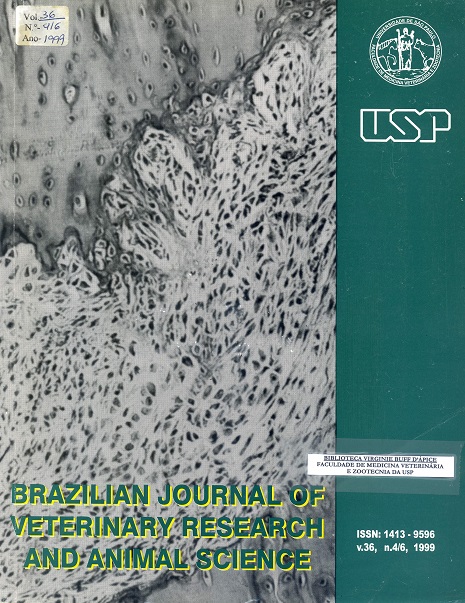Influence of the development phase of the dominant follicle on the superovulatory response in Nelore heifers
DOI:
https://doi.org/10.1590/S1413-95961999000600004Keywords:
Dominant follicle, Superovulatory response, NeloreAbstract
The aim of this study was to evaluate the influence of the dominant follicle during its growing, static and regression phases on the superovulatory response in 18 estral cycles of nelore heifers. The follicular development was monitored by ultrasound from Day 6 to Day 10 (Day 0=estrus) of the oestrus cycle, when the diameter of the largest follicle was measured and the number of subordinate follicles counted. The animals where superovulated with 400 or 500IU of FSH/LH twice daily for 4 days begining on day 10 of the oestrus cycle I was injected PGF2alpha concomitantly with the fifth dose of FSH/LH. Artificial insemination was done 12 and 24 hours after the begining of the estrus. Embryos were recovered on day 6.5 after the first insemination. If a dominant follicle was present before superovulation, it was observed subordinate follicles atretic and low response to superovulatory treatment. The best result of transferable and total embryos was observed when the dominant follicle was in regression phase (3.67 and 10.17) at the beginning of the superovulatory treatment.Downloads
Download data is not yet available.
Downloads
Published
1999-01-01
Issue
Section
VETERINARY MEDICINE
License
The journal content is authorized under the Creative Commons BY-NC-SA license (summary of the license: https://
How to Cite
1.
Assumpção MEOD, Madureira EH, Arruda RP de, Celeghini ECC, Gusmões PPG, Candini PH, et al. Influence of the development phase of the dominant follicle on the superovulatory response in Nelore heifers. Braz. J. Vet. Res. Anim. Sci. [Internet]. 1999 Jan. 1 [cited 2024 Apr. 24];36(6):300-3. Available from: https://www.revistas.usp.br/bjvras/article/view/5725





